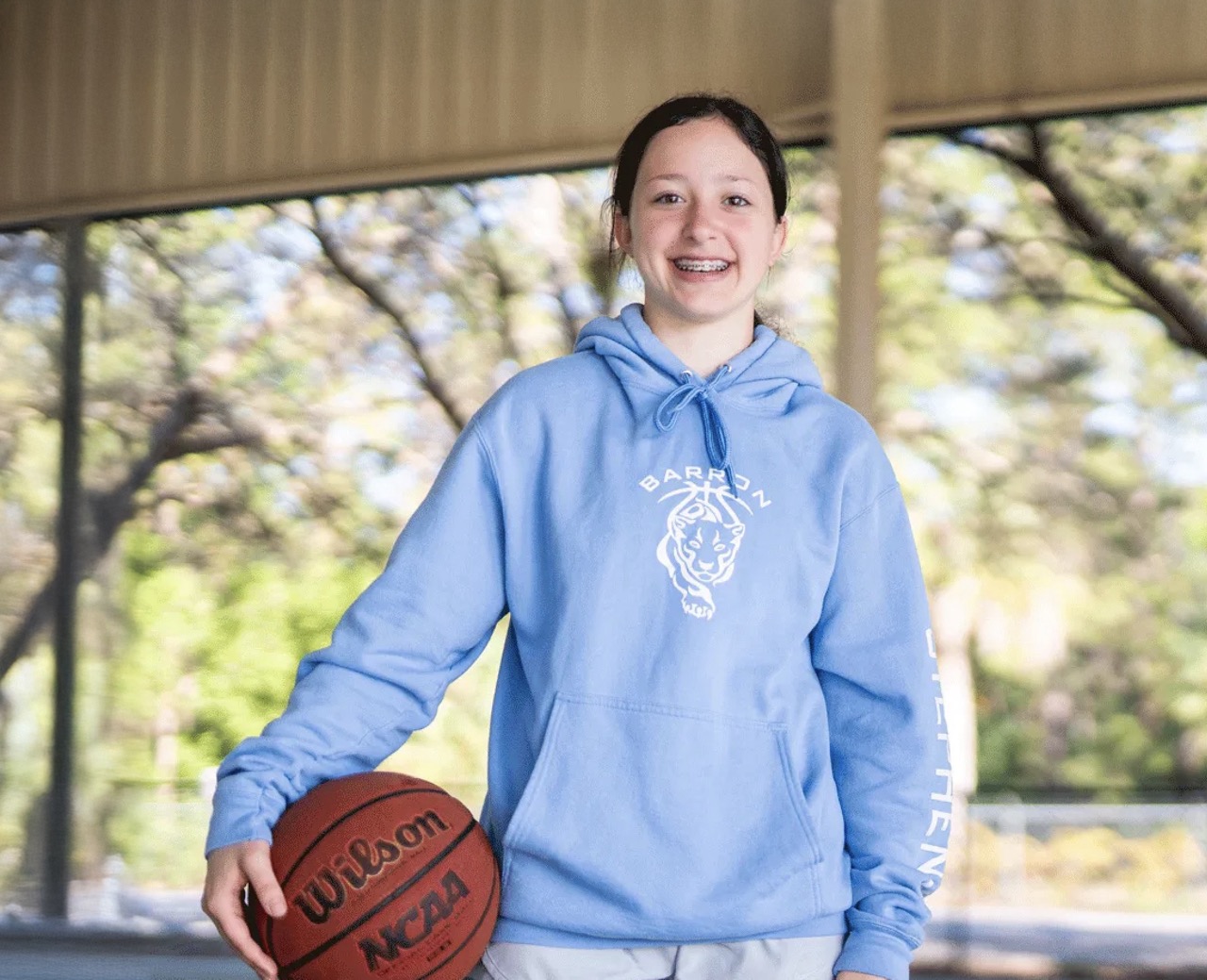Audrey's Story
Audrey Biggs planned to play collegiate basketball but was worried about reaching her goal after an ACL tear. An Arthrex biologic ACL reconstruction helped her return to the game and sign with the University of Pittsburgh.

Versatile. Tenacious. Cooperative. On and off the basketball court, Audrey Biggs is known for her work ethic, which propelled her to success as a top-scoring starting forward and helped her navigate one of the toughest challenges of her life.
A Layup Gone Wrong
“I was playing for the West Virginia Thunder traveling team in high school. I went up for a lay up with another player on my back,” Audrey said. “I came down hard and felt a pop. I let out a scream, which is something I never do—I’m not the crying type. But I knew something was wrong.”
Audrey’s anterior cruciate ligament (ACL) was torn, and she immediately feared for her future as an athlete. Would she be able to play basketball in college?
“My mental state was not okay. My dad had a serious conversation with me. He said that ‘Things happen for a reason. You will get through this and come back as a better version of yourself,’” Audrey recalled. “So, I decided to improve my mindset and focus on my goals. I wanted to play at the highest level I possibly could, and I was not going to let this injury stop me.”
Treatment on a Timeline
Audrey turned to Dr. Chad D. Lavender, Assistant Professor of Orthopedics at Marshall University, for help.
“Audrey’s injury was straightforward, but we were up against the clock to get her back on her feet and ready for the college recruiting process,” Dr. Lavender said.
To fix Audrey’s ACL tear, Dr. Lavender performed an Arthrex biologic ACL reconstruction, a procedure using her quadriceps tendon (the tendon that connects the quadriceps muscle in the leg to the patella, or kneecap) for her new ACL. He used the InternalBrace™ technique for additional support during the healing process.
The Arthrex biologic ACL reconstruction technique uses a special needle to harvest bone marrow from the patient’s shinbone. A machine is used to spin the marrow down, which concentrates it and creates bone marrow aspirate, or BMA. Next, the BMA is mixed with autograft bone (from the patient’s own body) and allograft bone (from a donor), forming a putty that is put into the knee socket before the ACL graft is “pulled” through.
“Essentially, we are ‘fertilizing’ the socket with good cells and bone grafting. I liken it to what you do for a potted plant to help it grow,” Dr. Lavender said. “In a study my team conducted, adding biologic components, such as BMA and autograft and allograft bone, helped the healing process. Additionally, the InternalBrace technique allows for a faster return to rehab. We have shown very high patient-reported outcomes and return to sport after the Arthrex biologic ACL reconstruction technique.”1
Find a Doctor Near You
Rehabilitation and a Return to Basketball
Audrey was committed to playing competitive basketball again, so she prioritized her recovery by going to physical therapy five days a week. “I decided, I’ve got this. I am striving to be one percent better every single day,” said Audrey. “Dr. Lavender was like a coach to me. He was there for me every step of the way and I told him, ‘I’ve got this—I am coming back stronger and better.’”

Her drive and determination paid off. Six months after her injury, Audrey was back on the court playing so well the University of Pittsburgh, a Division 1 school, was interested in her. Audrey signed on to become a Panther.
“Audrey is remarkable,” Dr. Lavender said. “She performed so well, so fast. She got back and earned new Power Five conference offers. When you can help someone get back to what they love, that is so special.”
After her ACL tear, Audrey says she is living proof that these injuries, which are common in sports like basketball, can be overcome.
“If you have a goal, if you have a dream, don’t let an injury like this stop you,” Audrey said. “Get the right medical team on your side and it can just be a bump in the road.”
Reference
1. Lavender C, Hewett T, Johnson J, Peluso R, Patel T, Taylor S. Return to activity following ACL reconstruction with the fertilized ACL: a retrospective study. Marshall J Med. 2023;9(3).doi:10.33470/2379-9536.1410
The InternalBrace surgical technique is intended only to augment the primary repair/reconstruction by expanding the area of tissue approximation during the healing period and is not intended as a replacement for the native ligament. The InternalBrace technique is for use during soft tissue-to-bone fixation procedures and is not cleared for bone-to-bone fixation.
This real patient was compensated for the time they took to share their experience.
Surgeon is a paid consultant for Arthrex Inc. For questions, please contact Arthrex Medical Education.







